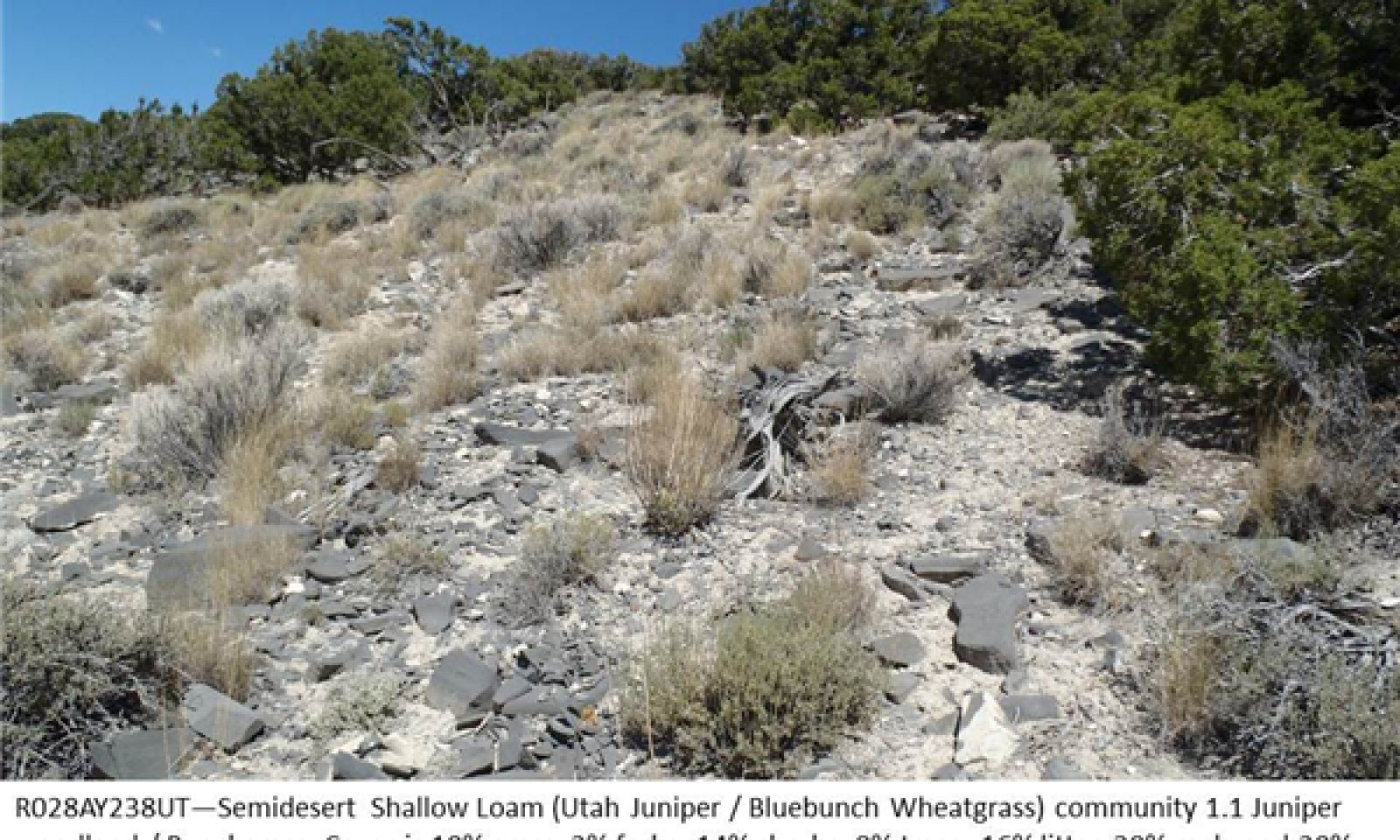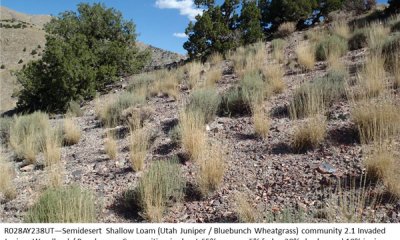
Semidesert Shallow Loam (Utah Juniper-Bluebunch Wheatgrass) North
Scenario model
Current ecosystem state
Select a state
Management practices/drivers
Select a transition or restoration pathway
- Transition T1a More details
- Transition T2a More details
- Transition T2b More details
- Transition T3a More details
-
No transition or restoration pathway between the selected states has been described
Target ecosystem state
Select a state
Description
The Reference State is characterized by mature stands of Utah juniper with an understory of bluebunch wheatgrass and black sagebrush. Fire, the most common natural disturbance, removes juniper and most shrubs, while promoting bluebunch wheatgrass growth for several decades following fire. Non-sprouting shrubs and juniper increases slowly in the plant community after fire. Juniper regains overstory dominance after about 70 years (Barney and Frischknecht 1974).
Submodel
Description
The Invaded State functions similarly to the Reference State, but allows for the presence of non-native species.
Submodel
Description
The Utah Juniper/Annual Understory state retains juniper dominance in the overstory, but is dominated by invasive annual species in the understory. Production is greatly reduced and limited to a few weeks in April and early May. This state is not resistant or resilient against further degradation to State 4, in which the juniper overstory is lost.
Submodel
Description
The Annual Dominance state is dominated by invasive annuals, primarily cheatgrass, which increases the fire frequency to every several years (as opposed to decades or centuries). The fire frequency precludes woody species from regaining dominance on the site, and the resource pulses favor annual species. There is currently no transition or restoration pathway out of this state.
Submodel
Mechanism
This transition occurs when invasive species establish on the site. Establishment of invasive species provides a seed source that decreases the resilience of the site following natural or human disturbance.
Mechanism
This transition occurs when invasive annual species, such as cheatgrass and storksbill, become dominant in the understory, while Utah juniper remains dominant in the overstory. Some perennial grasses may be present but not dominant. Improper grazing that further reduces the vigor of perennial grasses during the growing season can drive this transition.
Mechanism
This transition occurs when fire or other disturbance removes the woody species and frees up resources for invasive annuals, such as cheatgrass and storksbill. Invasive annuals now dominate the site and drive the ecological processes in their own favor, and to the exclusion of native species. Perennial grasses may be present but not dominant. The fire return interval is expected to be reduced to every few years, instead of several decades or centuries.
Mechanism
This transition occurs when fire or other disturbance removes woody species and frees up resources for invasive annual species to thrive. Juniper and other woody species are not able to regain dominance in the community due to increased fire frequency following this transition.
Model keys
Briefcase
Add ecological sites and Major Land Resource Areas to your briefcase by clicking on the briefcase (![]() ) icon wherever it occurs. Drag and drop items to reorder. Cookies are used to store briefcase items between browsing sessions. Because of this, the number of items that can be added to your briefcase is limited, and briefcase items added on one device and browser cannot be accessed from another device or browser. Users who do not wish to place cookies on their devices should not use the briefcase tool. Briefcase cookies serve no other purpose than described here and are deleted whenever browsing history is cleared.
) icon wherever it occurs. Drag and drop items to reorder. Cookies are used to store briefcase items between browsing sessions. Because of this, the number of items that can be added to your briefcase is limited, and briefcase items added on one device and browser cannot be accessed from another device or browser. Users who do not wish to place cookies on their devices should not use the briefcase tool. Briefcase cookies serve no other purpose than described here and are deleted whenever browsing history is cleared.
Ecological sites
Major Land Resource Areas
The Ecosystem Dynamics Interpretive Tool is an information system framework developed by the USDA-ARS Jornada Experimental Range, USDA Natural Resources Conservation Service, and New Mexico State University.











